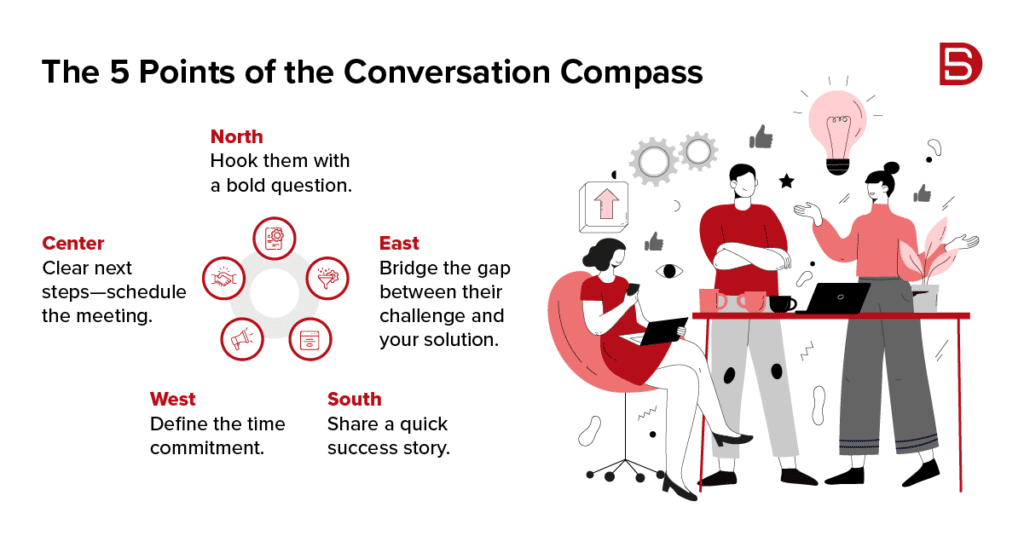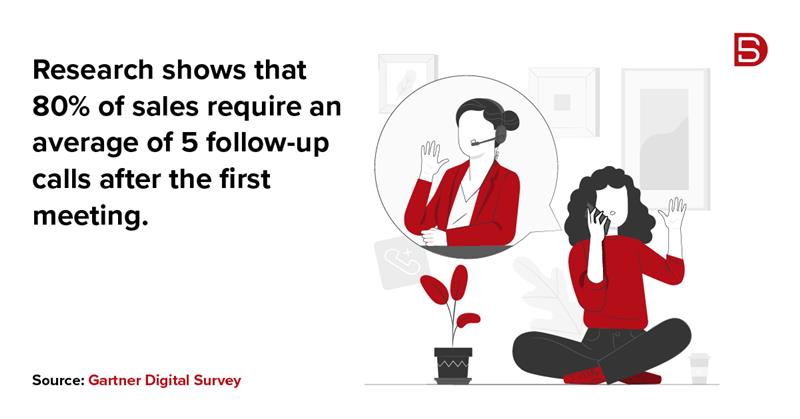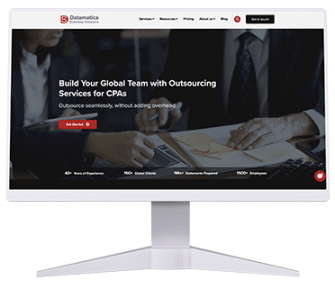Let’s say you’re standing at the helm of your business ship, watching potential deals drift by like fish in the stormy ocean. But you can’t seem to get close enough to capture them. Hence, you need a master navigator – an appointment setter who knows how to chart the course through these challenging waters.

The Hidden Cost of Missed Connections
Ever walked into your office on Monday morning, coffee in hand, only to realize your calendar looks emptier than a restaurant on Monday afternoon? You’re not alone. While everyone talks about closing deals and maximizing ROI, they’re missing the crucial first step – getting that coveted spot on a decision-maker’s calendar.
Think about it. Your product could be the next big thing since sliced bread, your service could revolutionize entire industries, but without appointments, you’re just another unread email in someone’s spam folder. Therefore, mastering the art of appointment setting isn’t just another skill – it’s your business’s lifeline.
The Psychology Behind the "Yes"
Let us tell you something most “experts” won’t: Appointment setting isn’t about convincing someone to meet with you. It’s about creating a moment of curiosity so powerful that they can’t help but want to learn more. It’s like that irresistible aroma wafting from your favorite coffee shop – you weren’t planning to stop, but here you are, ordering your third cappuccino of the day.
Our brains are wired to seek solutions to problems, but the challenge here is that the problem should be worth solving. Ensure your approach triggers both the recognition of a challenge and the possibility of a solution.
The Three Pillars of Appointment Setting Success
1. The Timing
Timing in an appointment setting is crucial. Studies show that Tuesday through Thursday tend to have higher response rates for B2B meetings, this is your golden window. But it’s not just about the date and time. You need to understand your prospect’s industry cycles, busy seasons, and even their patterns.
Financial services executives are most receptive early in the quarter, while retail decision-makers are more available during mid-afternoon lulls. Manufacturing leaders? They’re often more accessible during shift changes. It’s about aligning your outreach with their natural rhythms.
2. The Power of Preparation
According to a study, 82% of B2B decision-makers believe that most sales rep fail to engage with their prospects because they are often unprepared for their meetings. You should avoid such awkward encounters and arm yourself with the following information about the client you are meeting with:
- Recent company announcements and press releases
- Industry challenges and market positioning
- Competitive landscape and threats
- Personal achievements and professional history
- Company culture and values
- Recent investments or strategic initiatives
- Digital footprint and social media presence
3. Personalize your Outreach
Here’s where most appointment setters fail: they treat personalization like a Mad Libs game. “Hello [NAME], I noticed your company [COMPANY NAME] is in the [INDUSTRY] space.” Yawn. Therefore, we need to dig deeper.

Use the "Mirror Method"
Now, let us share something that’s rarely discussed but incredibly powerful. Experts call it the “Mirror Method.” Instead of pushing your agenda, you reflect your prospect’s world back to them, but with one crucial difference – you show them what’s missing.
Here’s how it works:
Research Phase:
The first step is – to know your prospects, dig deep into their business, and understand their challenges and missing opportunities. This will help you set a solid stage for a productive conversation.
- Analyze their digital presence—Visit their website and social media presence and observe their engagement with audience. Examine what strategy they are using for their online presence. Are they consistent with their storytelling? If not, where are they lacking, etc.?
- Study their customer reviews—Use this hack if you want to understand the relationship between the business and its clients. Go through their customer reviews online. Negative reviews can reveal the business’s pain points. Here, you can spot the gap between customer expectations and what they are getting.
- Review their competitor landscape—Study their business competitors and learn what they are doing right or wrong. This will help you understand what your prospect needs to change in terms of strategy or technology. This step will help you navigate what your prospect is lacking in the business and how you can help them overcome that challenge.
- Examine their market positioning—What’s your prospect’s differentiator in the market, or are they facing challenges in differentiating themselves? By doing this, you can help them understand how to stand out in the crowded market and create more opportunities for themselves.
- Identify their growth initiatives—Has your prospect recently invested in a new project or changed their strategy? Use this insight to craft and align your solution with their business goal.
Reality Check:
Now that you have studied your prospect, it’s time to map out the action plan. Here, you’ll mirror the reality of their business with the added information of the missing piece of the puzzle.
- Map out their current processes—analyze their strategy, whether lead generation or sales pipeline, and study how they operate. Are their processes streamlined? Are they facing any roadblocks that are slowing them down?
- Identify efficiency gaps—Observe the problem area where they lose money, time, and energy. This can be anything from working with traditional or outdated technology to a flawed workflow where employees are stuck with minial tasks.
- Spot missed opportunities—Are they missing the chance to target a potential segment, or are they failing to leverage any new marketing channel that will benefit them? Highlight these missing opportunities and explain how they can benefit if they act upon them.
- Calculate potential losses—One of the most efficient tips is to walk them through the cost of missing opportunities and highlight what they are losing because of current inefficiencies. This step will help them understand the potential risk to the business if not taken care of efficiently.
- Highlight risk areas—Highlight potential risk areas, such as market disruption or security vulnerability. This will help you position yourself as a trusted partner rather than just a regular sales rep who is desperate to sell.
Resolution Preview:
Here’s where things start to get fun. Now that you have all the information about your prospect show them what it could be by tailoring your solution to help them fuel their business growth.
- Create a custom solution narrative—Rather than pitching a generic pitch, craft your pitch as offering a solution to their specific challenge. Explain how your solution will seamlessly blend into their workflow and help them improve.
- Quantify potential improvements—Don’t just say it —prove it! Picture a colorful image backed by solid numbers about how their business will benefit from the solution that you are providing. For instance, you can cut costs by up to 20% in your next quarter by streamlining this process.
- Showcase relevant case studies—any prospect will ask for proof of your promising results. Share a case study that mirrors the same scenario as your prospects. Explain how your clients have seen measurable success after adopting your solution. This will give them confidence in you.
- Present implementation timeline—Let’s be honest, no one likes changes, specifically unknown ones. Help them visualize the transition process. Give a timeline showing how quick and smooth the implementation will be.
- Outline expected outcomes—don’t just push your solution; help them understand what long-term gains they’ll get once they adapt your solution. It can be anything: quality leads, efficient workflow, improved customer engagement, etc.
Risk Removal:
The final step is to address any concerns your prospect is considering. At this point, the prospect still be unsure about the changes you suggest. This is when you clear all the doubts that bother your prospects and pave the way to saying ‘yes’ as easily as possible.
- Address common concerns proactively—prepare for the expected objections, like budget concerns, time constraints, or rigidity toward change, and address them directly. This will create transparency and build trust.
- Provide social proof—make your pitch credible with your existing clients’ testimonials or success stories. Assure them they are collaborating with a partner who will help them fuel their business effortlessly.
- Share success metrics—Provide your prospect with metrics that show the tangible results your past clients achieved after implementing your solution. This will make your prospects confident about making the right decision about your solution.
- Offer guarantees—To sweeten the deal, offer them a guarantee. Encourage them to take a free trial or make performance-based agreement, making them comfortable committing.
- Present flexible options—finally, offer them options they can’t deny. This can include a tailored solution, payment method, and so on. When prospects have options, the chances of them taking action will increase.
The Script That Isn't a Script
Forget everything you’ve learned about sales scripts. And use the “Conversation Compass” framework to engage with your prospects. It’s not about memorizing lines; it’s about understanding the natural flow of human curiosity.

The Five Points of the Conversation Compass
1. North - Opening Hook
“[Prospect Name], what if I told you that [specific industry challenge] has a solution that doesn’t require [common painful solution]?”
Example: “Sarah, what if I told you that supply chain visibility could be achieved without adding more tracking software to your already complex tech stack?”
2. East - Value Bridge
Connect their current situation to your proposed meeting with a bridge of value. Explain to your prospect the gap between where they are and where they could be, but make it specific to their world.
3. South - Proof Point
Share a short but relevant success story related to your prospect’s pain point. Speak about the results that you helped your current client to achieve, but keep it brief and powerful.
4. West - Time Investment
Make the time commitment clear and reasonable. Be specific about the agenda and expected outcomes.
5. Center Clear Action
Present specific meeting options and make it easy for them to say yes to them.
The Metrics That Matter
It’s not about how many calls you made; it’s about how interactive those calls were. Tracking the right metrics is the backbone of appointment setting; here, it goes beyond numbers. Let’s illuminate some important metrics aspects that you should consider for a successful appointment setting.
Connection Quality Score (CQS):
The number of calls you make daily is important, but CQS takes it a bit further than the depth and quality of the interaction. To understand whether the prospects are genuinely interested, track the conversation duration, engagement level, and the intent of response. This metric will help you ensure that you spend time nurturing high-potential leads rather than chasing inactive prospects.
Decision Maker Reach Rate (DMRR):
This metric will help you evaluate how efficiently you reach your target prospects, i.e., the decision-makers. This process includes tracking how often you bypass gatekeepers, successfully navigate referrals, and use direct dials to your advantage. A high DMRR means you have strategized your outreach program efficiently and focused on creating meaningful connections.
Appointment Show Rate (ASR):
Now that you may think you have successfully secured an appointment, your job is done! The real challenge comes after that, and it’s ensuring that your prospects actually show up. ASR monitors confirmation responses, rescheduled requests, and no-show percentages. This analysis of the most preferred time slot will help you optimize scheduling for higher attendance rates, helping you convert your appointments into meaningful conversations.
Conversion to Opportunity Rate (COR):
COR will help you measure how often your appointments turn into pipeline opportunities. The prime focus of this metrics is to track how many appointment opportunities contribute to your sales pipeline and ultimately convert into clients. If you have successfully High COR, it means you have cracked the code for driving real business results.

The Follow-Up Formula
How do you plan your follow-ups? Is it well-structured, value-added, or just an irregular nudge to your prospects with an intent to sell only? Your follow-up strategy will make or break your deal, so strategize smartly to keep the conversation alive and ensure your prospects remain interested in the deal. The 333 method will help you approach your prospects systematically and impactfully.
Immediate (3 minutes): Sealing the Commitment:
Now that you have your appointment, it’s time to secure it. To make it solid, send a calendar invite with a detailed agenda outlining the discussion, a link to schedule the meeting, and materials about the solutions you offer to your clients. This immediate outreach action will reinforce the prospect’s commitment and build your credibility by showing that you are organized and professional.
Short-term (3 hours): Building Momentum
Within three hours of your outreach, follow up with supporting materials such as case studies from their relevant industry, research reports, or testimonials of your existing clients that add depth to your initial conversation. This will help you solidify the value of the meeting and ensure that your prospects feel excited and invested in attending.
Medium-term (3 days): Nurturing confidence
The next step is to send a reminder three days before the appointment. Don’t just send a reminder; nudge them with some value-added information, such as insights tailored to their pain points, preparation tips to make the meeting fruitful, and logistics confirmation to eliminate any uncertainty. This will help you reduce the risk of no-shows and build anticipation for a meaningful discussion.
Building Your Appointment Setting Dream Team
Just like behind every successful man, there’s a woman; behind every successful appointment-setting strategy, there’s a dedicated team of specialists working tirelessly, bringing their unique skills to the table. Whether you are working solo or outsourcing appointment setting, understanding the key roles will help you streamline your process. Let’s breakdown a list of key players and why they are important for your dream team.
1. The Researcher
- Market analysis expert
- Data mining specialist
- Industry trend analyst
- Competitive intelligence gatherer
2. The Connector
- Communication specialist
- Relationship builder
- Value articulator
- Objection handler
3. The Coordinator
- Schedule optimizer
- Follow-up manager
- Resource organizer
- Process streamliner
Your Next Steps
The journey to appointment setting mastery isn’t a sprint, it’s a marathon. But you don’t have to run it alone.
Remember, every successful business relationship starts with a single appointment. Your next big breakthrough is just one scheduled meeting away.
We understand all these can be overwhelming, but you don’t have to take the journey all alone. You can always opt for an appointment setting companies that offers B2B appointment setting services who will take care of appointment setting on your behalf and help you grow your sales pipeline without any hassle.
Conclusion
In the grand chess game of business, appointment setting is your opening move. Play it right, and you set yourself up for success. Play it wrong, and you’re playing catch-up from the start. The choice – and the next move – is yours.
Think of your calendar as a garden. Each appointment is a seed that, with proper nurturing, can grow into a flourishing business relationship. You need to plant those seeds first. Master the art of appointment setting, and watch your business bloom.
Are you ready to transform your calendar from a time tracker into a money maker? The appointment setter’s playbook is now in your hands. Use it wisely, use it well, and watch your business transform one scheduled meeting at a time.
Your success story begins with that first “yes.” Make it count.
For 42 years Datamatics has been a trusted growth partner for Fortune 1000 brands helping them overcome the complexities of appointment setting and transforming scattered efforts into smart, scalable growth, with our advanced AI-solution and human expertise we make sure your marketing targets gets achieved all time every time.
Let us help you streamline your B2B appointment setting process, write to us at marketing@datamaticsbpm.com, and one of our expert will assist you with your specific requirement.

Paul van de Kamp


